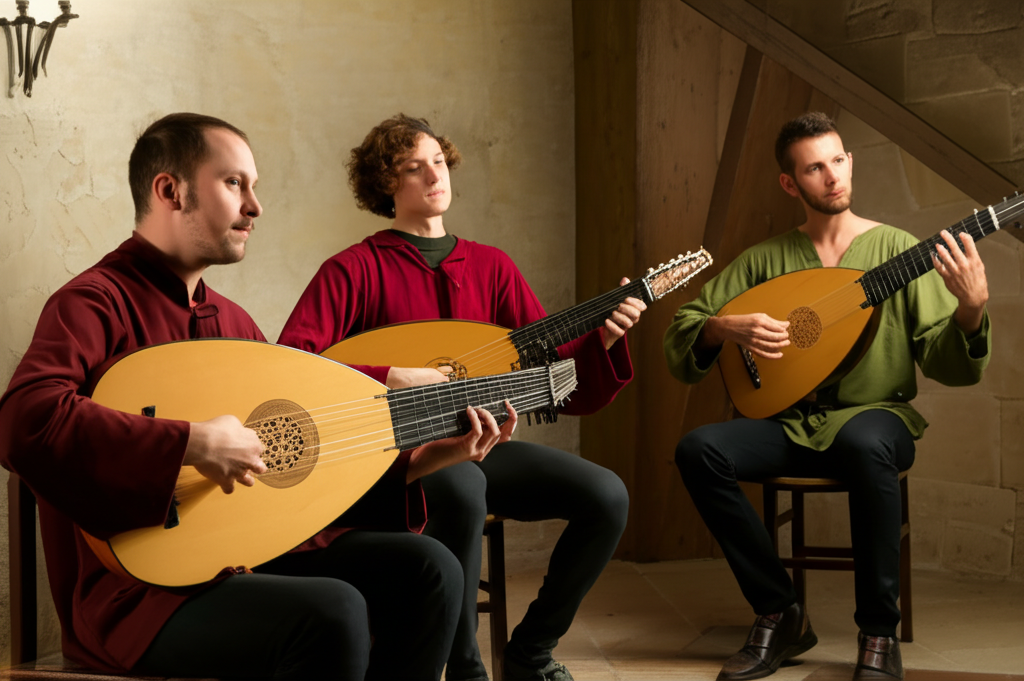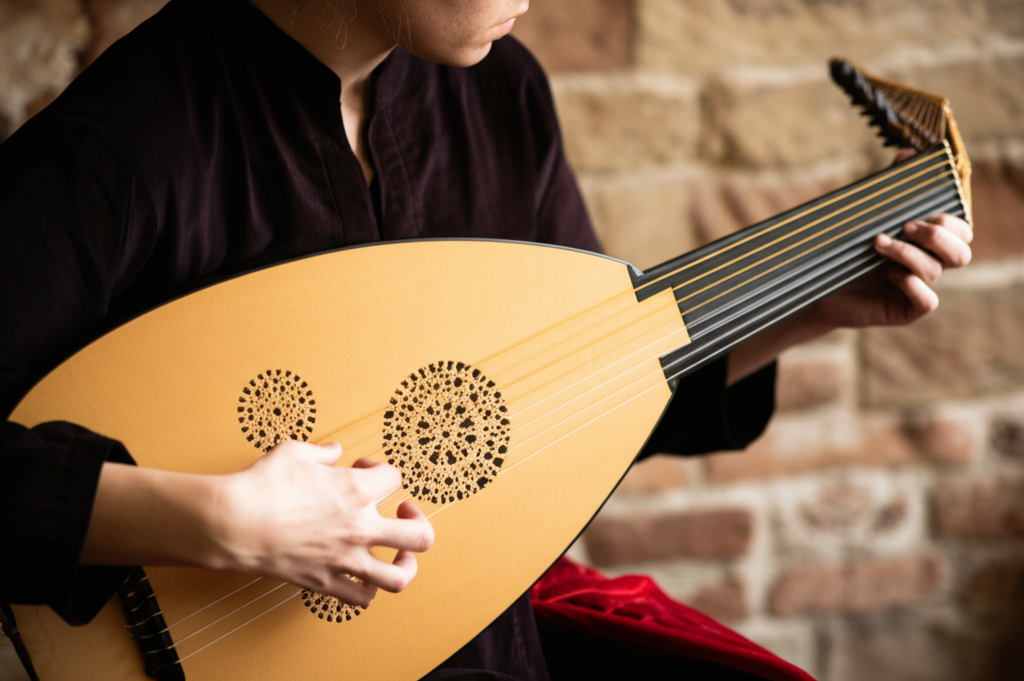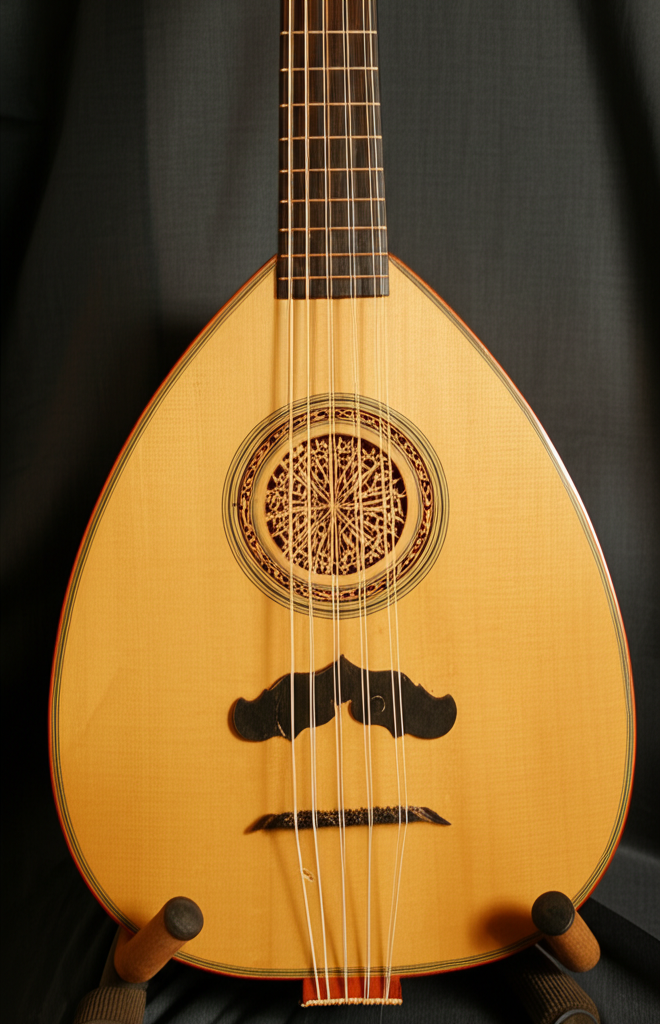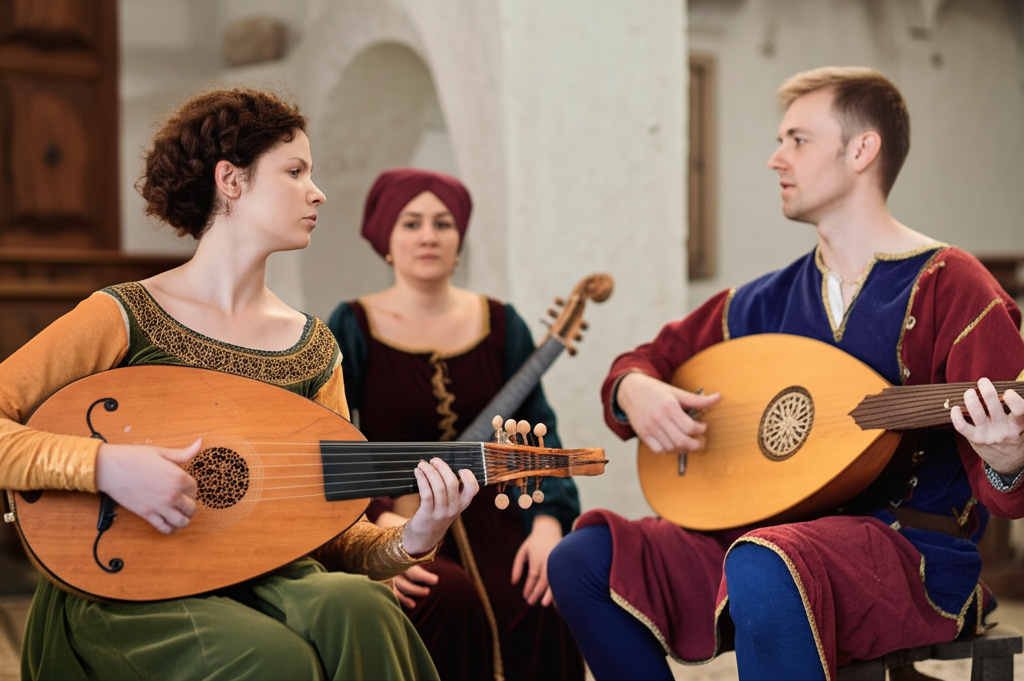The Guitar in the Medieval Period
500 - 1400 CE
The Medieval period saw significant developments in stringed instruments across Europe and the Islamic world. The cultural exchange between these civilizations, particularly through the Moorish conquest of Spain, introduced new instruments and techniques that would directly influence the evolution of the guitar.

The Moorish Influence and the Oud
One of the most significant developments in the history of the guitar came with the Moorish conquest of Spain in the 8th century. The Moors brought with them the oud, a fretless, pear-shaped stringed instrument that would have a profound influence on European instrument design.
The oud featured a short neck and a deep, rounded back made from strips of wood. Its playing techniques and construction methods would be adapted by European instrument makers, leading to the development of the lute and eventually the guitar.
Introduction of the Oud to Spain
The Moorish conquest of Spain brings the oud to Europe, introducing new construction techniques and playing styles that would influence European instruments.
Early European Guitars
By the 13th century, instruments called "guitars" began to appear in Europe. These early guitars came in two main forms: the Moorish guitar (guitarra morisca), which had a rounded back similar to the oud, and the Latin guitar (guitarra latina), which had a flatter back and incurved sides more similar to modern guitars.
These instruments typically had four courses (pairs) of strings and were smaller than modern guitars. They were played primarily with a plectrum and were used for accompanying songs and dances.
Guitarra Latina and Morisca
Two distinct types of early guitars emerge in Europe: the rounded-back Moorish guitar and the flat-backed Latin guitar.
Libro de Buen Amor
Juan Ruiz's 'Libro de Buen Amor' provides one of the earliest written descriptions of the differences between the Moorish and Latin guitars.
The Medieval Lute
While the early guitar was developing, the European lute—derived from the oud—was becoming increasingly popular, especially among the nobility. The lute featured a rounded back made of separate ribs of wood, a distinctive bent-back pegbox, and multiple courses of strings.
The lute would become the dominant plucked string instrument in Europe during the late Medieval and Renaissance periods, though the guitar continued to develop alongside it, often considered a simpler, more accessible instrument.

European Lute, c. 1400 CE

Gittern, a small guitar-like instrument, c. 1300 CE

Medieval musicians performing with various stringed instruments
The Gittern and Citole
Other important stringed instruments of the Medieval period included the gittern and the citole. The gittern was a small, gut-strung instrument with a round back that was played with a plectrum. The citole had a distinctive shape with a hollowed-out neck extension and was carved from a single piece of wood.
These instruments, along with the early guitars, were frequently depicted in medieval manuscripts, sculptures, and paintings, showing their importance in the musical culture of the time.
Rise of the Gittern
The gittern, a small guitar-like instrument with a round back, becomes popular throughout Europe for both secular and sacred music.
Legacy of the Medieval Period
The Medieval period established several key developments that would be crucial for the evolution of the guitar:
- The introduction of paired strings (courses) that would remain a feature of guitars until the 18th century
- The establishment of a distinct body shape with a waisted middle
- The use of frets to divide the fingerboard into semitones
- The development of playing techniques using both plectrum and fingers
As Europe moved into the Renaissance period, these early guitar forms would continue to evolve, leading to more sophisticated instruments like the vihuela and the four-course Renaissance guitar.